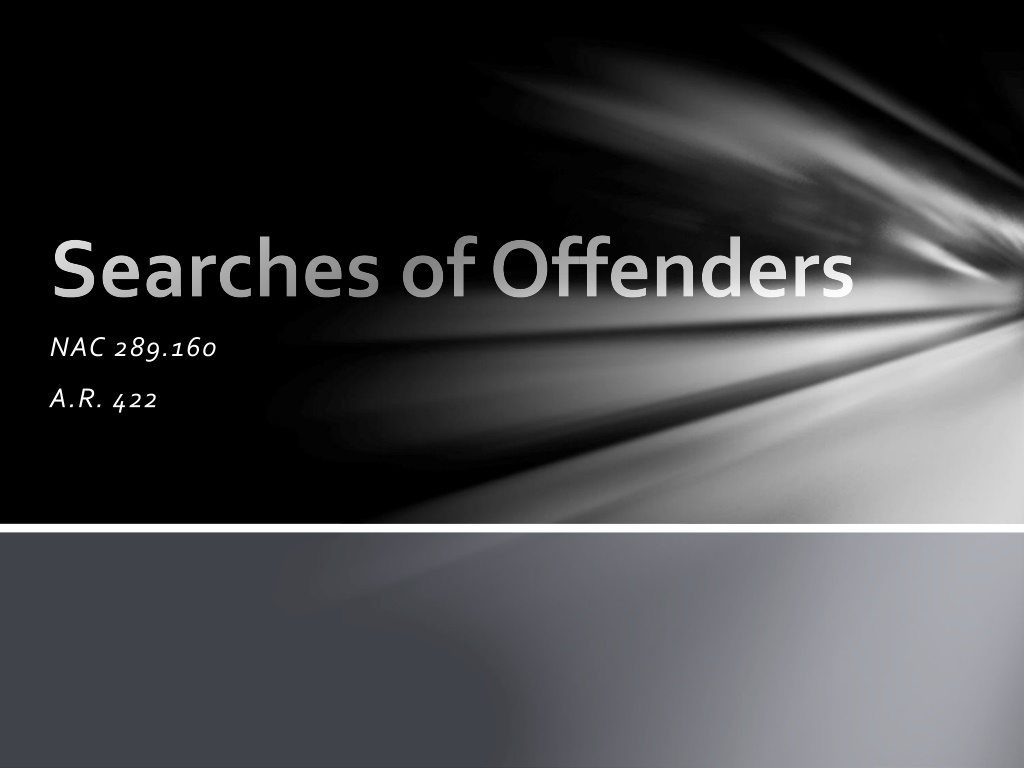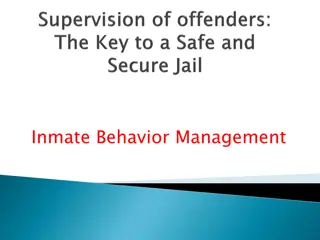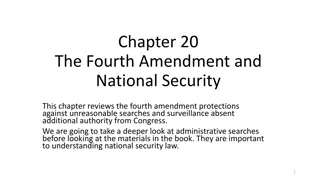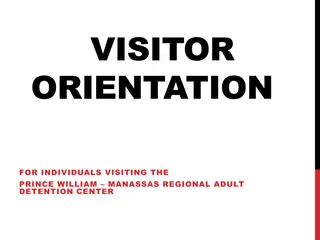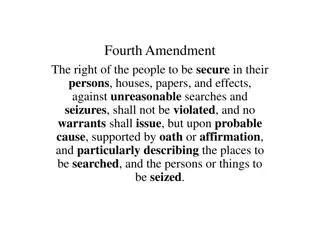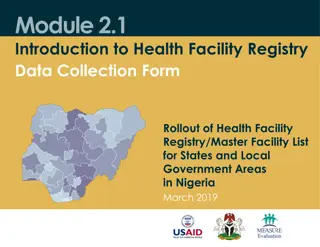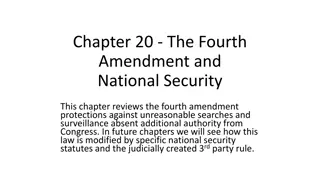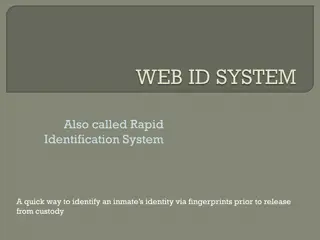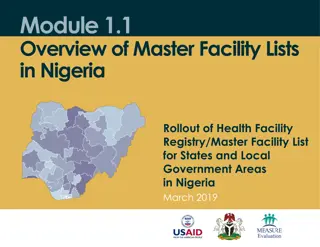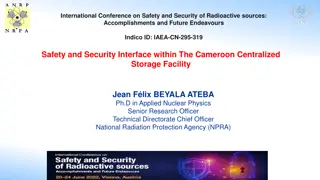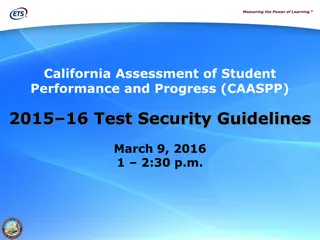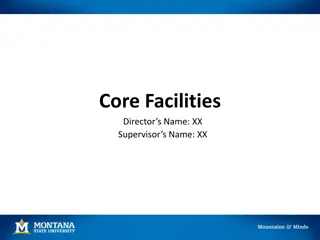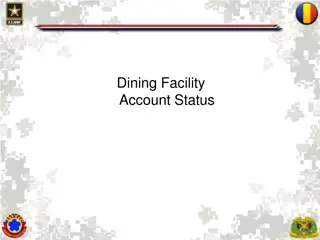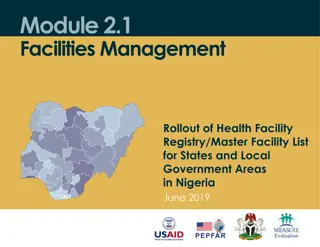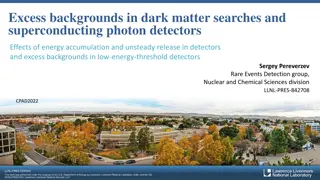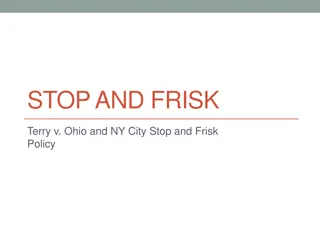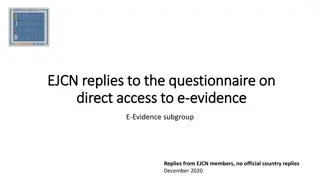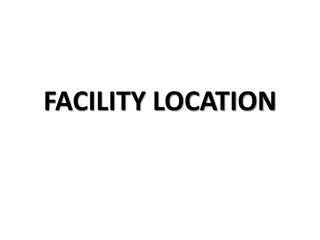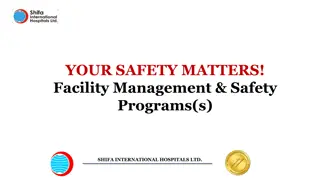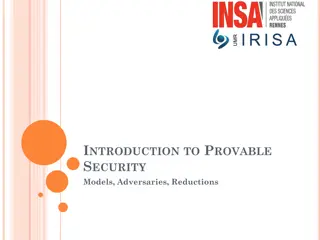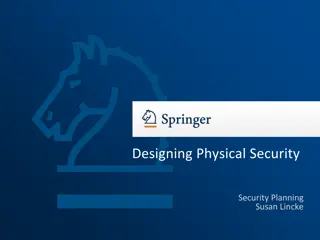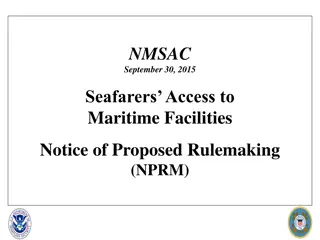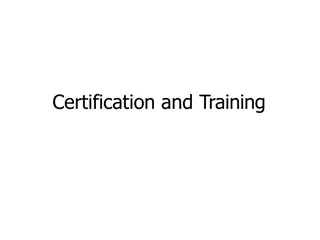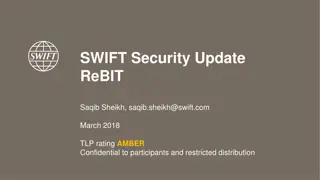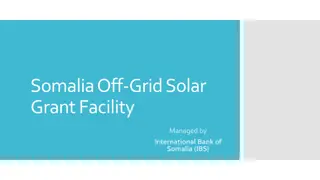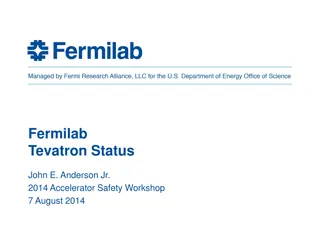Guidelines for Inmate Searches and Facility Security
Inmate searches in correctional facilities are essential for safety and security. This includes procedures for clothed and unclothed body searches, contraband definition, cell search methods, and facility search reasons. The guidelines emphasize conducting searches respectfully and professionally to uphold inmates' rights as outlined in A.R. 422 and the 4th Amendment. Understanding when and how to conduct searches ensures a secure environment while avoiding arbitrary or unreasonable actions.
Download Presentation

Please find below an Image/Link to download the presentation.
The content on the website is provided AS IS for your information and personal use only. It may not be sold, licensed, or shared on other websites without obtaining consent from the author. Download presentation by click this link. If you encounter any issues during the download, it is possible that the publisher has removed the file from their server.
E N D
Presentation Transcript
Searches of Offenders NAC 289.160 A.R. 422
Performance Objectives: A. Explain the following regarding searches: 1. When it is permissible to search an inmate. 2. When it is permissible to conduct an unclothed body search of an Inmate, to include: Purpose for conducting an unclothed body search Who has the authority to conduct a body cavity search Discuss how to conduct an unclothed body search.
Performance Objectives: 3. Steps for conducting a clothed body search, to include: Reasons a clothed body search of an inmate may be conducted at any time Areas of the body that must be given close consideration during the clothed body search Areas of apparel that should be given close consideration during a clothed body search Communicating and conducting searches in a respectful and professional manner. How to maintain safe/ appropriate distance. How to conduct a clothed body search. Open Hand/Back of the hand technique. How to conduct a standing/prone body search
Performance Objectives cont. B. Define the term contraband C. Describe common methods used for searching a cell D. Identify the reasons for conducting a facility or area search
A.R. 422 Inmates are subject to pat-down searches, frisk, strip visual body cavity search. Intensive body cavity search and property searches if necessary for the safety and security of the facility. Searches are not to be conducted for arbitrary, capricious, oppressive, unreasonable or harassment.
4th Amendment The right of the people to be secure in their persons, houses, papers, and effects, against unreasonable searches and seizures, shall not be violated, and no warrants shall issue, but upon probable cause, supported by oath or affirmation, and particularly describing the place to be searched, and the persons or things to be seized.
Introduction Searching of both offenders and jails/prisons require following agency policy and procedures. From the initial intake of a person into custody they become the responsibility of the detention agency.
Why search? For the safety of staff, inmates and the institution Weapons Drugs Cellphones Prison made alcohol Helps reduce unauthorized items/contraband. Medical items, supplies, culinary items, Deters inmates from having items they shouldn t have.
Safety is always number one! Commands should be loud and clear. Location. (walls, doors ,etc.) Awareness. Body positioning. Be thorough while searching Be respectful. All clothed searches shall be conducted the same way. Always wear your PPE!
Universal Searches All inmates regardless of gender or sexual identity shall be searched in the same manner. Staff will conduct clothed and unclothed searches in a professional and respectful manner, and in the least intrusive manner possible, consistent with security needs.
Male v. Female Female staff may search male and female inmates. Male staff will only search male inmates. At no point will female staff conduct a unclothed search on a male inmate. At no point will male staff perform a clothed or unclothed search of a female.
Permissible to Search Inmate searches are to control the introduction of contraband into the facility for the protection of the staff and inmate population. Inside the facility inmates will be subject to pat down searches, inventory searches, and in some cases unclothed searches. If you have probable cause that an inmate is hiding contraband or evidence inside their body, a body cavity search may be requested. A body cavity search will never be done inside the facility, as it requires a valid court order and will be done in a medical facility setting by medical personnel.
Unclothed Body Search A search of an individual requiring the removal of clothing to permit the visual inspection of private areas of the body. Officers will not touch the inmates at any time during the search Officers will wear appropriate PPE.
Unclothed Body search Done when an inmate is being admitted to the institution. If they are departing the institution for any reason. Before and after attending a visit. Leaving a segregation unit. If there is any reasonable suspicion that contraband may be on their person.
Conducting the search cont. Should be conducted by two officers of the same gender. Search should be conducted out of view of others/public. There will be no touching of the inmate at this point. One officer will always keep a visual on the inmate. Maintain professionalism at all times. One officer will give the commands and the other can search the article of clothing handed to them.
Conducting the search cont. Starting at the: Head- Check the hair. Ears Check behind them. Mouth- Must lift tongue. Torso: Hands- must show hands and wiggle fingers. Under arm pits- must run hands through them. Under fatty areas- If applicable. Groin area- (must be lifted on males) Lower Body: Legs must wiggle toes(Bottom of feet) Buttocks area ( must be separated and cough)
Conducting the search cont. If contraband is discovered or suspected in a body cavity. Notify your command shift. Notify Medical personnel. Only people authorized to conduct a cavity search is medical personnel. Do NOT attempt to retrieve contraband yourself.
Body cavity search Intrusive body cavity searches will be conducted in private and only be performed by a licensed medical professional. The search will be recorded in the inmates health record and the findings will also be documented by medical personnel performing the search.
Body cavity search cont. Contraband found during the search will be removed if feasible and medically safe. Any contraband found will be handled in accordance with NDOC policy.
Contraband defined Illegal or prohibited items by law or any item that may pose a risk to staff/inmates or the facility is considered contraband.
Contraband In the event that contraband is suspected the physician may perform a cavity search or may request the inmate be put in a dry cell. The inmate will be placed in a room/cell that is not accessible to other inmates and from which contraband cannot be passed. The inmate will be provided with as much privacy as possible during this process. If the room or cell has running water, it will be temporarily disabled and the toilet flushed.
Dry Cell The inmate will be monitored through the use of video cameras if available. And welfare checks will be conducted every 30 minutes. All meals and activities will be recorded. Liquids will be provided for consumption every two hours.
Dry cell cont. Upon observation of the inmate using the facilities, the inmate will be restrained and removed from the cell. Staff will utilize appropriate PPE and inspect the specimen. Any contraband found will be handled in accordance with NDOC policy.
Conducting Clothed Body Searches Frisk or Pat Down search: A cursory search that includes actually touching the person, systematically checking for weapons and contraband. The search is generally done for inmates during intake or returning from movement anywhere in or out of the facility, where the inmate was not directly supervised by a detention/corrections staff member at all times. A pat down search may also be conducted for any articulable reason, at any time, pursuant to the safety and security of the facility.
Officer safety Body Positioning: Make sure to be aware of your surroundings. Pay attention to the task at hand. Never put yourself in a vulnerable position. Never become complacent in your search. If searches are performed correctly it can reduce the flow of contraband. Always wear your PPE
Clothed body search Conducting a search while standing should be done in a way that provides safe and practical effectiveness. When conducting a search you need to be clear on what is expected from that individual. Inmate must be notified before searching sensitive areas such as the buttocks, breast area and groin.
Clothed body search cont. The searches will be conducted when an inmate leaves a work assignment. Returns from an unsupervised area. Moves from one part of the institution to another. Its intent is to minimize contraband being moved from within the institution Can be conducted as random.
Conducting the Search Typically done by one officer Begin at the head. Check the collar and seams. With an open hand search one side of the body starting with the arms. Search the back/ torso. Search the chest area. (with the back of the hand) Search the belt line. Search down each leg.(with an open hand) Search the buttocks area.(with the back of the hand)
Prone Search It will be completed similar to the standing. Typically this inmate will be in restraints. Roll the inmate up on either side of their body. Start with the head. Search the chest area(with the back of the hand) Search the torso down to the belt line. Search the back down you the belt line. Search down the leg nearest to you. Roll to the other side and proceed to do the same as before .
Things to avoid Unprofessional, inappropriate, offensive and derogatory remarks. Improper searching techniques. Using searches as a form of harassment. Forgetting about safety. (Its important) Avoid quick searches, be thorough.
Inventory Search Inventory Search: Removes the personal property from a person while ensuring the items of contraband or evidence do not get into the facility. Performed in intake/booking, or prior to any inmate coming back into the facility.
Searching of a cell or housing area Searching of a cell/housing unit must be done to ensure there is no undo risk to the safety of the inmates, staff and the facilities operation. With officer safety in mind never run your hands or fingers blindly over areas you cannot see to avoid sharp objects or booby traps. Tools utilized for searching cells may include a flashlight and mirror for searching. This search should be systematic and thorough, but it isn t intended to destroy a recklessly destroy inmate or jail property.
Examples Air Vents free from debris and contraband. Desk/table check under desk and shelving, check for missing screws and search all personal items. Look inside envelopes, make sure all commissary items are still sealed. Light Fixtures Look for items stuck to top or sides, check bolts and cover secure over light. Bunks check linen, untie any knots, and check mattress and pillow for rips or tears. Check all bolts making sure the bunk is secure to the wall, check cracks at both ends of bunks.
Examples Door check door jam, hinges, and screws, lock plate, use a mirror and flashlight to check groove on top of door. Sink make sure the sink is secure to wall, drainpipe intact, and look under sink. Mirror check for breakage and edges for small places to conceal items. Toilet use a mirror to check under toilet rim, look for strings tied to seat, flush toilet afterwards. Air Vents free from debris and contraband.
Reasons for Searching a Facility Searches of a facility can be performed for the purpose of detecting contraband, and potential security issues. Inmates and areas of the facility can be searched at anytime without probable cause, consent or a warrant. Any inmates in these areas at the time of the scheduled search.
Vehicle Searches Should be conducted on every vehicle entering/exiting a facility Used to prevent escapes Used to prevent the introduction of contraband to a facility Used to prevent contraband exiting a facility
Documentation A requirement for ALL Searches NOTICE entry at minimum Cell shake down log (DOC 1830) Written receipt for ALL items taken Unauthorized form (DOC 1517) Done to reduce liability
Northern State Correctional Facility Newport Vermont Inmate used 9-year-old girl to smuggle drugs into prison Vermont State Police say one of three people who've been charged showed the girl how to slip drugs enclosed in cellophane wrap to an inmate during visitation.
Legal issues United States Supreme Court held for the first time that the fourth amendment does not protect inmates/prisoners from searches of their personal property by correctional officers. prisoners have no reasonable expectation of privacy in their jail/prison cells that must be protected by the fourth amendment.
NDOC Zero Tolerance Policy The Department of Corrections has a Zero Tolerance policy for any form of sexual misconduct to include staff/contractor/or volunteer on inmate or inmate on inmate sexual harassment, sexual assault, sexual abusive contact and consensual sex.
NDOC Zero Tolerance Policy Any staff member/contractor/volunteer who engages in, fails to report, or knowingly condones sexual harassment or sexual contact with or between inmates shall be subject to disciplinary action and may be subject to criminal prosecution. The Department shall take a proactive approach regarding the prevention, detection, response and punishment of any type of sexual contact.
